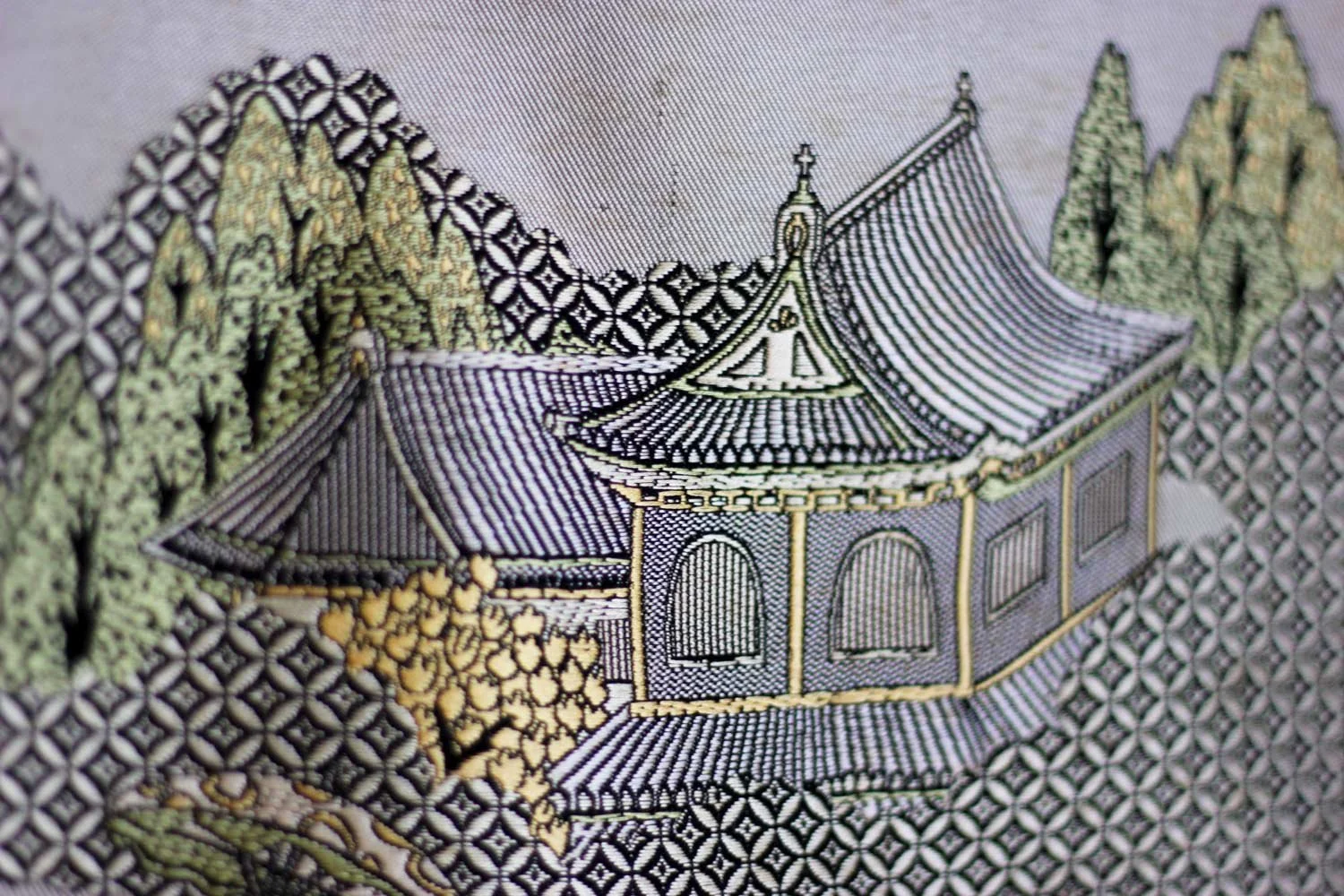
Nanban byobu
Once again, thanks to a motif on a vintage obi, I'm given the chance to discuss a topic that captivates me. I can only spare a few lines to it in this description, but hopefully, this will pique your interest and encourage you to read more about it on your own.
MOTIF STORY
If I mention "Japanese painted screens," also known as byobu, I think many of you will picture the delicate paintings of the Rinpa school – minimalistic botanical motifs against a backdrop of shimmering gold leaves. However, over the centuries, a wide array of screen styles have emerged. These screens, beyond their functional use, serve as artistic creations and historical commemorations.
Now, let's dive into the Nanban byobu, the star of my introduction today. The term "Nanban" translates to "Southern barbarians" and historically referred to foreign traders and missionaries who arrived in Japan's Kyushu region during the 16th century. The art of the 16th and 17th centuries was significantly influenced by interactions with these foreign entities, giving rise to what we now know as Nanban Art.
This obi features elements from famous Nanban byobus depicting the arrival of a Portuguese ship in Nagasaki, in 1571. This motif is amusing to look at because it blends recognizable classic Japanese design elements – like composition or the empty spaces separated by clouds – with distinctly non-Japanese features. For instance, a structure resembling a temple is adorned with a Christian cross on its roof, characters are dressed in vibrant, wide-legged pants that greatly differ from traditional kimonos, and then there's the presence of a ship and an elephant, neither of which are native to Japan.
The Japanese were fascinated by these foreigners due to their exotic appearance, unique attire, impressive ships, and the diverse goods they brought along. As a result, these foreigners were meticulously depicted in various paintings and screens, capturing their intricate details. Just as I was surprised to see all these representations depicted on a Japanese obi, I can only imagine how utterly intrigued Japanese people must have been when they first encountered them.
Composition: 100% silk
Various painted screens from the 16th century depict similar scenes as this one below. We can observe the same elements listed earlier, the Christened temple, the Portuguese colorful outfits, the ship and the exotic animals. On this one we can see dogs and horses but no elephants. It is surprising to see elephants and girafes, they were brought on the ships when they stopped in Africa. On some paintings we can see the Portuguese bringing caged tigers as well.
Nanban byobu of c.1570-1616 attributed to Kano Naizen, Kobe City Museum
CUSTOM ORDER
There is only a small amount of this fabric available. When ordering a bumbag, keep in mind that it will not be possible to feature the entire motif on the same bag.
Please indicate your favourite part or colour so I can frame it onto your bag when I create it. For a larger bag, the entire motif can be displayed (see the examples below).
Close ups
Previously made in this fabric








